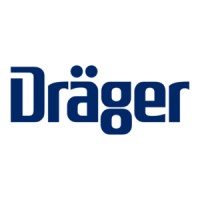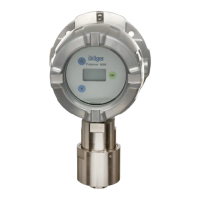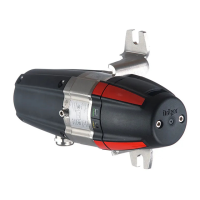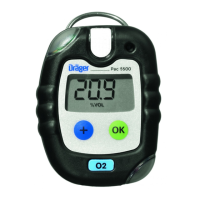Technical Manual | Dräger Polytron
®
8000 Series 47
Calibration
9 Calibration
Obey the safety statements mentioned in 2.5 Commissioning!
A calibration checks and adjusts the measurement accuracy with a known test gas
concentration. First the zero point of the sensor and then the sensor span is
calibrated. Calibrations have to be performed on a regular basis. The length of
calibration intervals depends on the ambient conditions in which the sensor is
operated.
Ambient conditions and aging cause sensor drifts. Sensor drifts have a negative
impact on the measurement accuracy. Calibrations restore this accuracy.
Depending on the severity of the drift shorter calibration intervals have to be
established.
To evaluate the ambient conditions of a new installations, shorter calibration
intervals with documentation of the drift should be established. The plant operator
should establish customized calibration intervals with the obtained data.
Under normal conditions, Dräger recommends the following calibration intervals
2)
:
– Electrochemical sensors (EC): 6-12 months
3)
– Catalytic sensors (CAT): 4 months
– Infrared sensors (IR): 6-24 months
3)
9.1 Test gases
For test gas properties (e. g. humidity, concentration) refer to the corresponding
sensor data sheet.
Test gas humidity is irrelevant for O
2 sensors.
Depending on the type of calibration different test gases are used.
Zero gas
Zero gas is a test gas to calibrate the zero point. If ambient air is free from
interfering impurities and measured gas, it can be used as zero gas. For O
2 and
CO
2 sensors, nitrogen (N2) is used.
Calibration gas
Calibration gas is a test gas to calibrate the sensor sensitivity during span
calibration. Calibration gas is a known concentration of the measured gas diluted
with clean air or nitrogen. For O
2 sensors no calibration gas is needed, as oxygen
from ambient air is used.
2) Observe sensor data sheet and sensor IfU
3) For applications in line with EN45544-1 the calibration interval must not exceed 6 months.
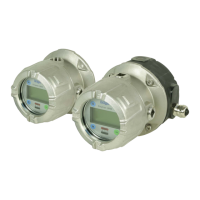
